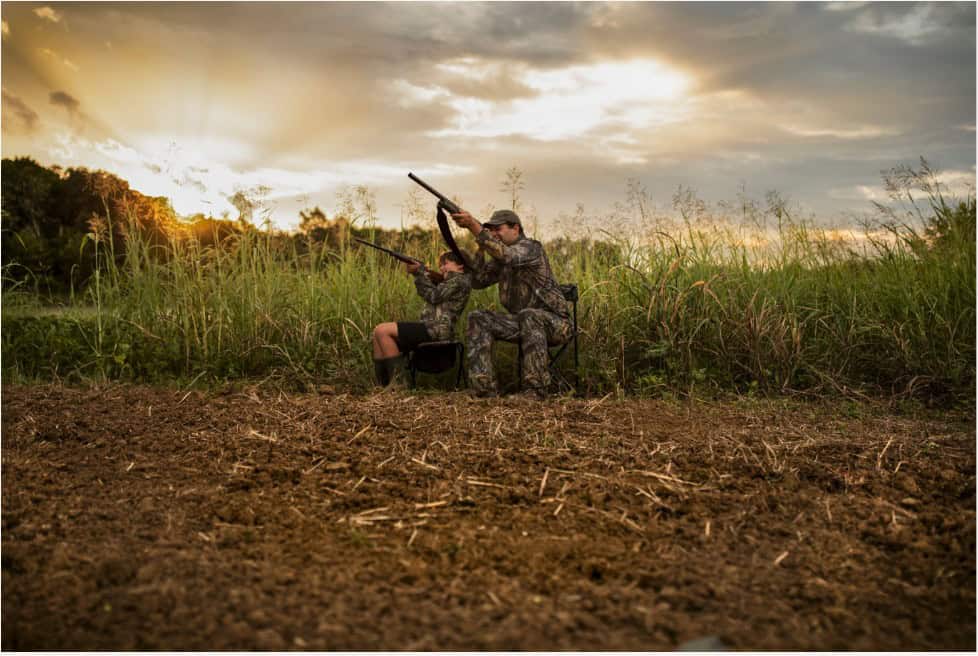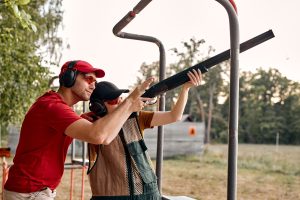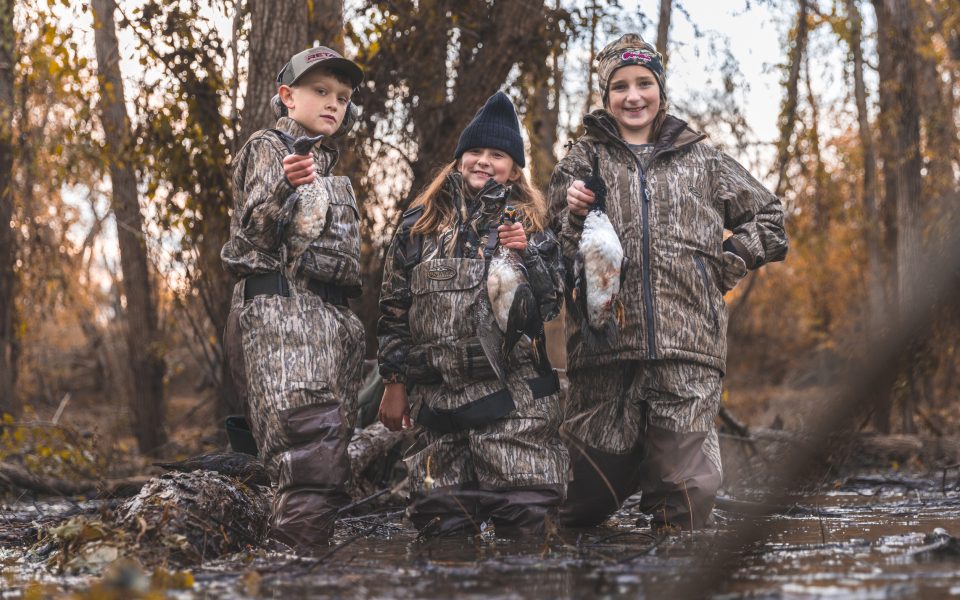Sharing the knowledge of wingshooting with a young or new hunter begins with patience. Swinging the business end of a shotgun can’t begin until gun safety is addressed, and then the likely initial results will be lots of missed birds. The mentor’s role is to never let the student get demoralized, because of course, everyone starts out the same way. A passion for wingshooting may take one hunter on a lifetime odyssey of hunts, while another may not be as keen on burning powder and loud banging. The tried and true blueprint regarding a youth hunter is to introduce them to clay targets and then on to actual ducks, pheasants or my favorite way to introduce youth is through dove hunting.
Youth hunters today have to take a hunter’s education class with local DNR approved instructors. While this usually means they understand how to shoot small caliber rifles (.22), oftentimes some have no experience with shotguns and wingshooting. Connections with good instructors can often lead to some trap or skeet shooting at a gun range as an introduction to shooting birds on the wing. For older hunters such as myself, there was no such step by step program for youth, and I can’t even recall how young I was when taken to dove fields by my father.

What I can remember is that I wanted to shoot a dove and that it was an uphill task for someone who at the time thought a single-shot 20-gauge was as a heavy as a boat anchor. But when that first dove folded and fell to earth, there was no tally of all the missed shots, as other hunters affirmed that I was now a wingshooter. With decades of dove shooting notched on my belt now, I realize that each successive hunt opportunity is another outdoors blessing.
Wingshooting is a hand/eye coordination game. When you see the target your eyes send a message to your brain. The brain then signals the finger to pull the trigger once the anticipated lead picture is confirmed. This process sounds easy, but may take some time for new shooters to figure out.
Gun weight and fit is a good place to begin when introducing someone to wingshooting. They need to be able to raise the gun up and follow through on shots, and a gun barrel that is too long and heavy impedes those actions. After weight, the fit of the stock to the shooter’s shoulder and how they “cheek the gun” is next to consider. If the gun stock is too long, then it is impossible for the shooter to be looking down the barrel of the gun at a flying target. The best bet is to use a borrowed gun for a hunt to check on weight and fit. When purchasing a gun, the stock can always be cut down some, or extended by adding a recoil pad to satisfy fit demands.
Making sure that they’re seeing the correct sight plane is also important. As most veterans know, most shoot a shotgun by pointing, not aiming with one eye closed. When you consider the absence of a rear sight on a shotgun, you’ll find that the shooter’s eye on the side that the shooter shoulders the gun takes its place. Ideally, the new shotgunner should be able to close their eyes, bring the stock to their cheek where they will anchor the gun, open their eyes and they should see the entire length of the barrel (or vented rib) and the bead at the end, but not too much of it. If they’re viewing only the rounded top of the receiver, the stock is not high enough for this shooter. Or, if they’re seeing too much of the barrel or vented rib, the stock is too tall. In either case, the shotgun is not a good fit. If it’s a precious gun that’s been handed down or a shooter needs to use a specific gun that doesn’t fit them, padding can be added to raise the cheeking position or wood work can be done on the stock to either raise or lower the cheeking area. Assuming the gun fits the shooter properly and is cheeked and placed into the shoulder correctly, the gun should shoot exactly where the shooter is looking (pointing, not aiming).
Eye dominance can sometimes be overlooked, but if the wingshooter struggles mightily that should be tested, though most people are right eye dominant. If a shooter is left-handed then it is important that they shoot a left-handed model shotgun. Sometimes shotguns are passed down in families, and those that are typically older models were all right-handed. A left-handed shooter today benefits greatly from obtaining a left-handed gun. In fact, left-handed shotguns are still not all that common, but they can make all the difference in the world to a lefty wingshooter!
Shooting a shotgun is much like pointing your finger. If you focus on an object and then point at it with either hand, chances are pretty good that you’ll be right on with your finger, and should be the case whether the chosen target is stationary or moving. Remember to point and not aim. If you can successfully allow your eyes to lead your hands to an object without a shotgun in them, likely you can do the same thing with a shotgun in hand.

Roman Chazov
The inaugural experience for a newbie going into the dove field with others is a lesson in social hunting inclusion. Others call out “MARK – bird in the field,” giving a heads up to fellow hunters. If someone connects on a good shot it is also common for someone to shout out in support of their efforts. To watch the birds enter and exit the field sharpens the wingshooting skill of following a bird’s flight, which becomes a key in learning how to be aware and ready to raise your gun as a dove comes into range. One can either lead the dove with a sustained lead, or take a follow-through type shot requiring the barrel to swing continually.
If you watch doves fly, sometime you may question why would someone begin a new wingshooter on doves? They can perform acrobatic aerial maneuvers. Clay targets may be a better way for some to learn, or at the very least a combination of this and actual bird hunting. Doves dip and dive while clay targets tend to keep they’re same track. On the trap or skeet range it’s also easy for a parent or instructor to stand behind the new wingshooter to give in time advice and correction if needed.
Areas of the country also may not have doves. In many northern states you get opening weekend and the doves are already headed south. In this case, the above mentioned clay targets, ducks or pheasants may be a better choice to begin with. Dove hunting is nice because you’re standing on solid ground and can typically practice good shooting form, rather than standing in a crotch-deep in a marsh or rocking boat, or obstructed by corn stalks or tall cover.
It used to be OK for the newbie hunter to fire off a quick three-volley offering at a passing dove, because keeping the doves moving through the field benefits all the hunters. However, this is not a good habit to get into. Just firing off two additional shells because you missed the first one creates bad habits. Pull the trigger when you believe you can make the shot, period. After the first shot, take a brief fraction of a second to recompose yourself and focus back on the target you missed or find a new target. Dove hunting ammo is generally a low brass shell with No. 8 shot which does not allow for towering sky shots. Trial by error misses can quickly reduce the upward range that a newbie judges. AND, those shells aren’t as easy to come by these days and they aren’t cheap anymore either! That same social scene that can garner shooting compliments can also address a shooter that can’t touch a feather, and no one wants that kind of attention.
 Some public hunting opportunities limit the number of shells that a hunter can take into the dove field, which serves to reduce errant shots being taken. In South Carolina, manager for the Botany Bay Wildlife Management Area on Edisto Island plant historical dove fields that are only available for youth hunters (accompanied by an adult). “This hunt at Botany Bay WMA lets the kids learn about dove hunting,” said Bess Kellett with SCDNR. “It takes months of planning and intensive work to plant the sunflowers, corn and wheat. But the planted fields produce other dividends when the public sees the emphasis placed on dove management, since it benefits a host of other species, too.”
Some public hunting opportunities limit the number of shells that a hunter can take into the dove field, which serves to reduce errant shots being taken. In South Carolina, manager for the Botany Bay Wildlife Management Area on Edisto Island plant historical dove fields that are only available for youth hunters (accompanied by an adult). “This hunt at Botany Bay WMA lets the kids learn about dove hunting,” said Bess Kellett with SCDNR. “It takes months of planning and intensive work to plant the sunflowers, corn and wheat. But the planted fields produce other dividends when the public sees the emphasis placed on dove management, since it benefits a host of other species, too.”
On a 2019 end of season dove hunt I witnessed an 11-year old youth shoot his first dove. He made a pretty passing shot, sending the grey bird on its rainbow arc descent to the ground with feathers flying. The bird landed well away from his position, indicating that the dove had some momentum. The youth let out a whoop, and the hunters closest to him with a view of the good shot also bellowed with approval. The doves flew fine that day, but there were not enough for anyone to harvest a 15-bird limit. But no matter, another wingshooter had been ushered into the time-honored tradition of an outdoorsman.
Another dividend from that same hunt was the attendance of a gentleman that was 80-years young, still able to go into the dove field. I doubt his presence was felt by the youth, but to the middle-aged hunters such as myself, his presence signals how the devotion to wingshooting can still be present during the later years in life. Any outdoor activity in life where people with a 70-year age range can participate together has merit. The elder hunter doesn’t take a day in the field for granted. While the younger hunter is probably looking for heavy game-totes with lots of doves, both viewpoints offer evidence of the rewards of wingshooting.
Placing an emphasis on a quality hunting experience for youth cannot be overstated. Impressionable youths have lots of different options in the modern world to divert them from time spent in the outdoors. Hunter recruitment efforts today will no doubt provide protection for our natural resources tomorrow. Some of those that favor the discipline of wingshooting, will gradually get into farming for wildlife, and unlock the life lessons that can only be taught with time spent in the outdoors.






